This article was co-authored by Sylvia Rath. Sylvia Rath is a Parenting Specialist and the Director of Little Village Nursery School in Los Angeles, California. With over 30 years of experience, Sylvia guides parents through the preschool years and beyond by teaching respectful communication and positive discipline methods. Sylvia holds a BA in Psychology and Early Child Development from Antioch University. Before working at Little Village Nursery School, she taught preschool for eight years.
There are 17 references cited in this article, which can be found at the bottom of the page.
This article has been viewed 85,113 times.
When your kid is first learning to write, it can be an exciting and frustrating time. However, if you don't try too much too soon, it can be fun for you and your kid. Take some time to help your child build muscles, then move on to gripping a crayon or a marker. You can also work on fun letter games to get your child interested, and then work with marker and paper.
Steps
Building Dexterity and Muscles
-
1Let your kid color. Give your child crayons specifically made for younger kids, and let them color. Younger kid's crayons are usually smaller and wider (more like a pebble than a stick), so they are easier to grasp.[1]
- Just like any part of the body, kids need to build up muscle and dexterity in their hands before they learn to write.[2]
- If it's a nice day, take it outside. Use chalk to color on the sidewalk.
-
2Make necklaces together. Using macaroni or large beads, string them on yarn to create wearable art. The act of picking up pieces and stringing them works on dexterity.
- For this project, lay out the noodles in a bowl on the table. Cut a length of string. Thread a noodle onto the string, and tie the noodle in place on one end with a knot.
- Place the string back on the table, and proceed to create a string for each kid.
- Let your kids thread noodles on their respective strings, and then tie them off to create the necklace.
Advertisement -
3Give them Play-Doh. Let them have fun playing around with the dough. Their creations don't need to be perfect--just let them create what they want with the dough.[3]
- Working with Play-Doh and other clay builds up hand muscle and dexterity.
-
4Water the plants. Give your child a spray bottle to water the household plants. Ask the child to go around the house and give each plant some water. The action of squeezing the bottle builds up muscles in the hand.[4]
-
5Tell a story with finger puppets. Give your kids finger puppets and ask them to come up with a story about them. Have them act it out with the puppets on their hands. You can demonstrate first if your kids seem confused. Moving the puppets increases dexterity and coming up with a story encourages their imagination.[5]
-
6Teach them to cut snowflakes. Any kind of cutting activity helps strengthen their hands and increase fine motor skills. Just be sure to give them safety scissors so they don't hurt themselves.
- To make snowflakes, fold a piece of paper in half horizontally. Fold it in half again, but do it vertically.
- Fold it in half several times, always keeping one end without any folds. You should have a triangle shape that is misshapen on the non-folded end.
- Cut shapes in the the paper. Angular shapes work best. Also, make the unfolded end regular by cutting along the edge in a design. Open the paper back up for a snowflake.
-
7Play with stickers. Kids love stickers, and playing with them also encourages dexterity, as they must employ fine motor skills to peel them off the paper.[6]
- Make sure to give kids paper to place the stickers on. Otherwise, the stickers will end up all over your kids and the house.
Learning Proper Grip and Posture
-
1Try giving your kid something small to hold first. Let her work with half a broken crayon, as that will encourage her to grip it in her fingertips instead of resting it against her hand.[7]
-
2Show your kid how to hold a marker or crayon properly. You should use a tripod grip. A tripod grip relies on the pointer finger, thumb, and middle finger to support the pencil equally.
-
3Teach them not to grip it too tightly. Holding it too tight can hurt your kid's hand over time.
- Signs of this problem include ripping the paper and white knuckles.
- To help a kid loosen his or her grip, place a small lump of something, such as Play-Doh, in the palm of his or her hand while he or she writes.
-
4Work on pressure. Help your kid to understand how much pressure is needed. Too much can break crayons and pencils but too little means you won't be able to read what your kid wrote.
-
5Use an easel or slanted surface. The easel will hold the paper in place for the child, plus it teaches him how to hold his wrist for writing.[8]
Making Writing Fun to Learn
-
1Get out the shaving cream. Letting your kid write in shaving cream on a tray or pan will make the process more fun. You could also use whipped topping or pudding.[9]
-
2Spell out letters with Play-Doh. Roll out lines to make letters with your kid. You can begin with their name to make it more interesting or go through the alphabet.
-
3Use finger paints. To keep this less messy, try putting finger paint in a gallon zip-top bag and sealing it well. Be sure to squeeze out as much air as possible. Then your kid can trace letters on the outside of the bag.
-
4Use a hose or water gun on a hot day outside. Write letters on the concrete with a hose or water gun. Your kid will be amazed at how fast the letters disappear. Just be ready to get wet.
-
5Encourage your child to play with letters. Give your kids letter blocks, magnet letters, or rocks with letters painted on them, as all of them encourage letter recognition in your child. These types of toys also help build dexterity and muscles.
-
6Incorporate letter-learning into your daily life. Ask your kids to identify letters when you're out places, helping them to see what letters make what sounds by saying the word out loud.
-
7Compare everyday objects to letters. When you see something that looks like a letter, point it out to your child.
- As an example, half a pretzel looks like an "E," while the top of a cup looks like an "O."
Beginning to Write
-
1Trace letters. Write your kid's name on a paper in large letters with a marker. Help you kid trace the letter with her finger. You can then move up to having her trace it with a pencil.[10]
-
2Move up to connecting the dots. Write your child's name in light lines or dots so she has to connect them herself.[11]
- Show her how to go over the letters with her pencil. Guide her hand the first time she performs the task.
-
3Copy his or her name. Let your child copy the letters of her name rather than trace them. This process will reinforce the letters, as she actually has to learn the shapes. When tracing, she might just follow what you did, but now she has to recognize and redraw the shapes herself.[12]
-
4Give the letters a fun story. For instance, an "A" could be a house with two levels, while a "Y" is a person with their arms outstretched, yelling. Making it more fun will help your kid remember the letters and keep him interested.
-
5
-
6Teach phonemic awareness. Phonemic awareness is the knowledge the words are made up of sounds.[15]
- Look for words with similar beginning sounds. For instance, you could say "Tent starts with a 'T.' What other words have a similar sound at the beginning?" You can help your child along by giving him a few examples.
- Try rhyming games. Say a word, and see if your child can find a rhyme for it.
- Read aloud to your child, pointing to words as you go.
-
7Keep the alphabet around. When you're child is trying to write, make sure she has a visual reminder of the alphabet in upper- and lowercase letters.
-
8Use letter-tracing worksheets. You can find writing worksheets for free on the internet. These worksheets will help your kids work on letters individually, as each worksheet focuses on one letter. It will show your kids how to write them, and it will include areas where they will trace over the letter and areas where they must write the letter themselves. Some of these worksheets will also have words that begin with the letter.[16]
-
9Help kids out by describing movements. When a child is having trouble making a letter, write the letter yourself but not on the sheet your child is working on. Tell your child what you're doing as you go.
- For instance, when writing an "A," you can tell your child, "First you make a slanting line upward. Then, you start from the top of that line and make a slanting line downward. Next, you go to the middle of your first line and draw a small line over to the other side."
Moving Up to Words and Sentences
-
1Teach sounds in connection with letters. That is, focus on certain letters, and teach them the sound that coordinates with them.[17]
- For instance, you can say, "'T' makes a 'tuh' sound. Can you hear it in words like 'tuh-able,' 'tuh-op,' and 'tuh-rycycle?'"
-
2Work on spelling. Give kids a good foundation by helping them spell the words they commonly use correctly.[18]
- Teach your child to spell phonetically. Let them sound out words and write down the spelling as they think it sounds. Start with words that contain letters they already know the sounds for, which will help them make connections.[19] Help them learn the correct spelling by having them re-write a word after they've spelled it out themselves.
-
3Use worksheets that encourage your kids to write. For instance, some worksheets encourage kids to write what's going on in a picture, while others give them a prompt to write their own story.[20]
-
4Help your kids learn English word patterns. Group words with similar patterns together, and have your kids learn to write them. One way to help them is to encourage them to use the words in a story.[21]
-
5Talk aloud while you're writing. Let your child learn by what you do. As you make sentences, your child will learn to put words together, too.
- You can take it one step farther by having your child "play along." That is, if you're writing a note to a friend, let your child write a not to her friend.
-
6Use description exercises. Engage your kids in their environment by asking them to describe it on paper.
- For example, give them an object to describe, such as a cup, and set a time limit. When the time limit is up, give them another object to describe that seems dissimilar, such as a cucumber. Let them describe it within a set limit. As the final part of the exercise, have them write about how the objects are similar, which asks them to make connections and engages them more fully.[22]
-
7Try playing with poetry. Give your child exercises that encourage him to write creatively, which makes it more fun.
- As an example, try putting a number of unusual words on strips of paper, though they should be words that your kid already knows, such as "tissue," "frozen," "flame," "stroke," and "fanning." Let your kid pick a couple of words from the group without looking. Have her write a poem that incorporates all the words.[23]
-
8Make writing a daily practice. Encourage your child to write everyday. Let them use their imagination to make stories that go along with their pictures. As your kid continues to connect meaning with letters and words, his or her spelling will improve.[24]
- One way to encourage daily writing is to have your kid start a journal. You can ask your kid to write about what happened that day, or you can use prompts to help her along. As an example, you could ask her to write about one of her toys and why she likes it or to discuss a dream she had the night before.
Warnings
- When your child is first starting out, have him or her use soft-tipped writing utensils like markers and crayons instead of sharp items like pens and pencils.⧼thumbs_response⧽
References
- ↑ http://www.parents.com/toddlers-preschoolers/development/writing/teaching-preschoolers-to-write/#page=4
- ↑ https://developlearngrow.com/dexterity-in-the-hands-improve-handwriting/
- ↑ https://www.youtube.com/watch?v=3m3_noxez3w
- ↑ https://earlylearningideas.com/hand-strengthening-activities-for-kids/
- ↑ https://earlylearningideas.com/hand-strengthening-activities-for-kids/
- ↑ http://www.education.com/reference/article/Ref_Ready_Fine_Motor/?page=2
- ↑ http://www.parents.com/toddlers-preschoolers/development/writing/teaching-preschoolers-to-write/#page=6
- ↑ http://www.newkidscenter.com/How-to-Teach-a-Child-to-Write.html
- ↑ http://www.parents.com/toddlers-preschoolers/development/writing/teaching-preschoolers-to-write/#page=6
- ↑ http://www.education.com/magazine/article/preschool-letter-writing/?page=2
- ↑ http://www.newkidscenter.com/How-to-Teach-a-Child-to-Write.html
- ↑ http://www.parents.com/toddlers-preschoolers/development/writing/teaching-preschoolers-to-write/#page=10
- ↑ http://www.usnews.com/news/articles/2014/10/27/3-keys-to-teaching-kids-to-write
- ↑ http://www.newkidscenter.com/How-to-Teach-a-Child-to-Write.html
- ↑ http://righttrackreading.com/paactivities.html
- ↑ http://www.education.com/worksheet/article/lowercase-letters-writing-w/
- ↑ http://www.righttrackreading.com/howtospell.html
- ↑ http://www.readingrockets.org/article/teaching-elementary-school-students-be-effective-writers
- ↑ http://www.righttrackreading.com/howtospell.html
- ↑ http://www.education.com/worksheets/writing/
- ↑ http://www.righttrackreading.com/howtospell.html
- ↑ http://imaginationsoup.net/2011/11/5-creative-writing-exercises-to-do-with-young-writers/
- ↑ http://imaginationsoup.net/2011/11/5-creative-writing-exercises-to-do-with-young-writers/
- ↑ http://www.greatschools.org/students/academic-skills/196-kindergarten-writing.gs
About This Article
To teach a child to write, start by showing them how to hold a pencil correctly with the tips of their pointer, thumb, and middle finger. If they’re holding the pencil too tightly, place a small lump of play dough in their palm while they write to loosen their grip. Next, guide their hand as they trace over letters with the pencil, then let them try it on their own. Once they are comfortable tracing, let them practice writing their name to reinforce the letters and recognize their shapes and sounds. For tips on how to build your child’s finger dexterity using games, read on!
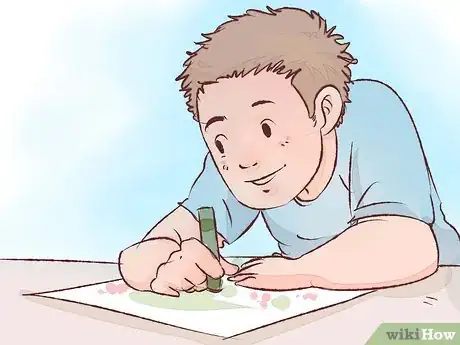
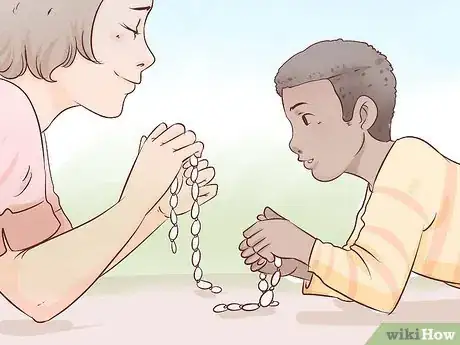
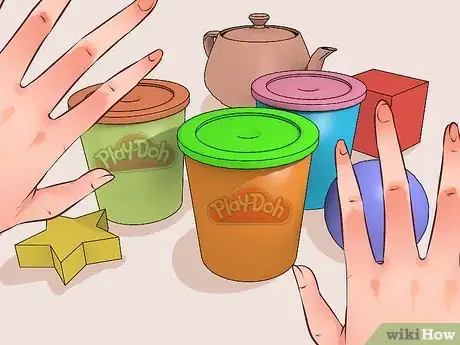
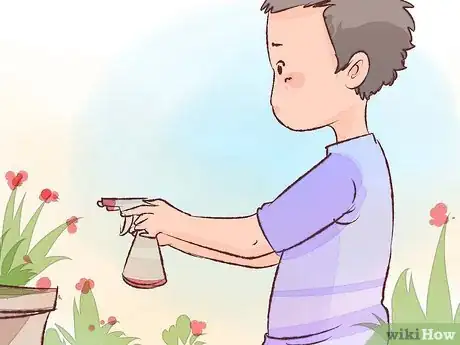
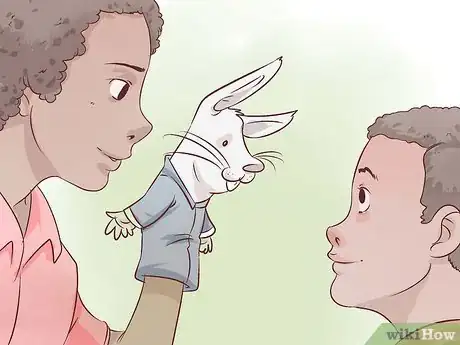
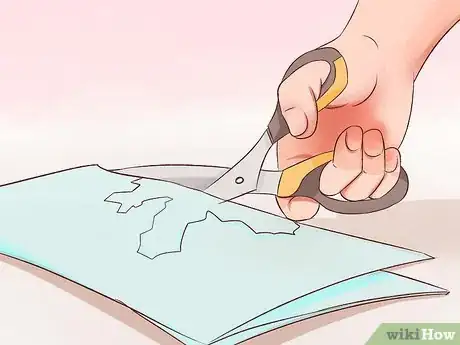
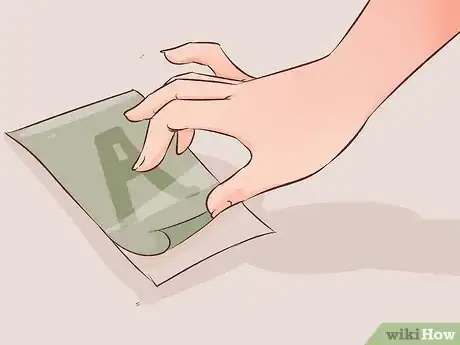
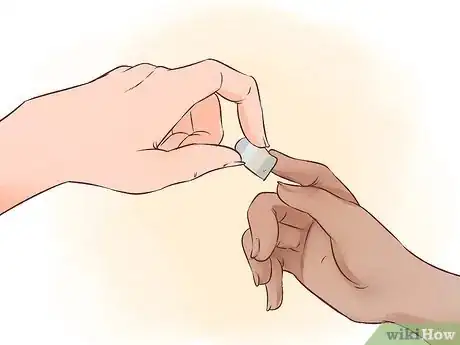
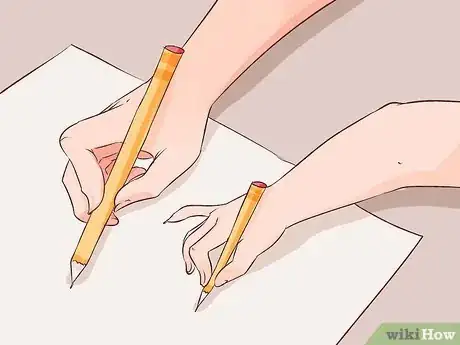
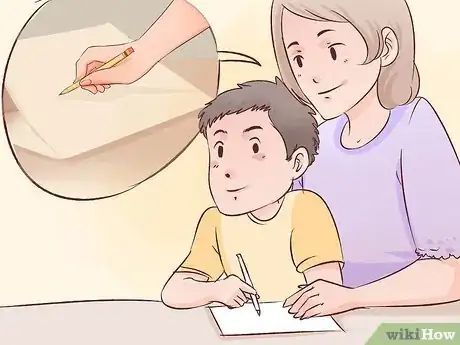
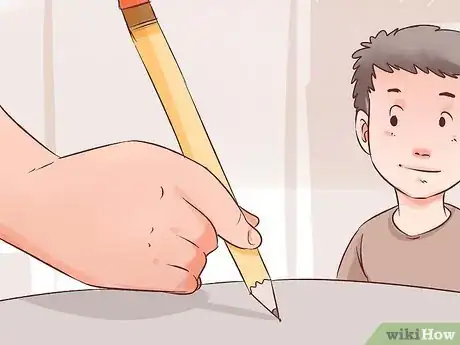
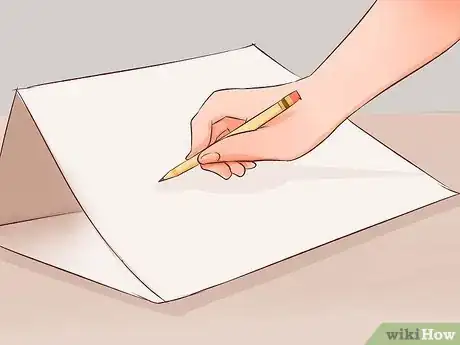
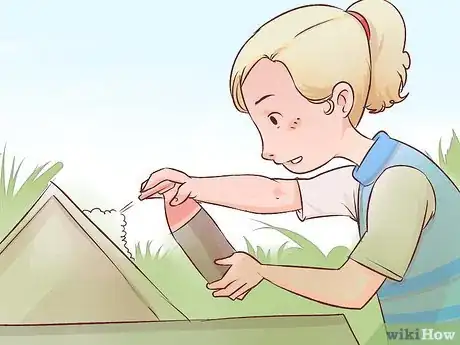
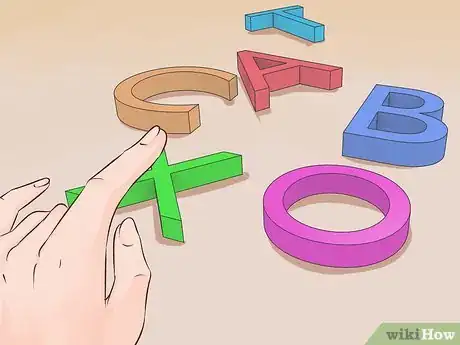
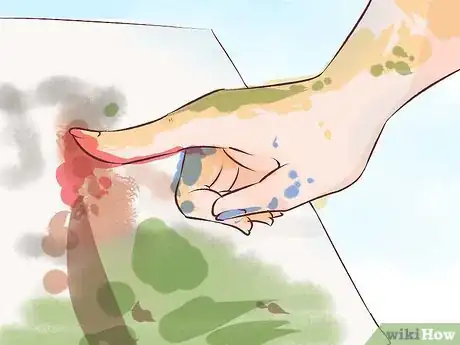
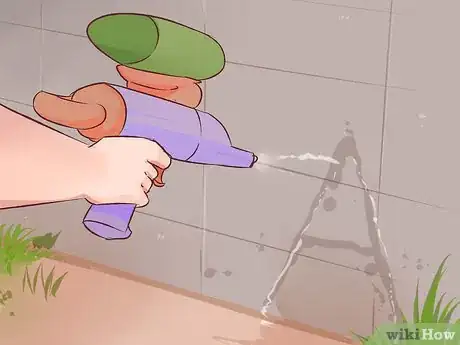
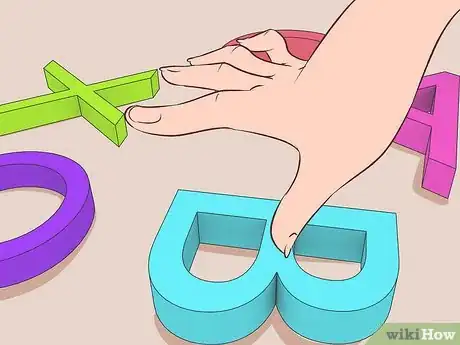
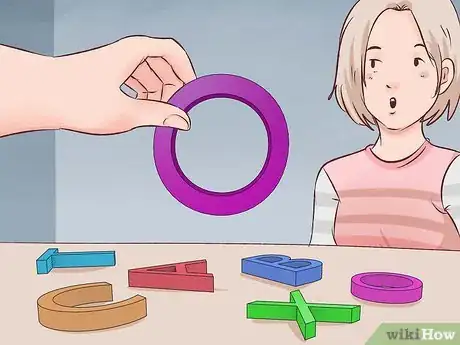
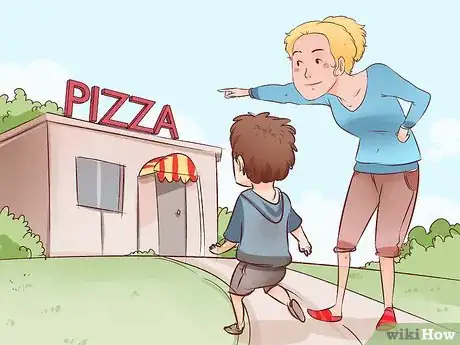
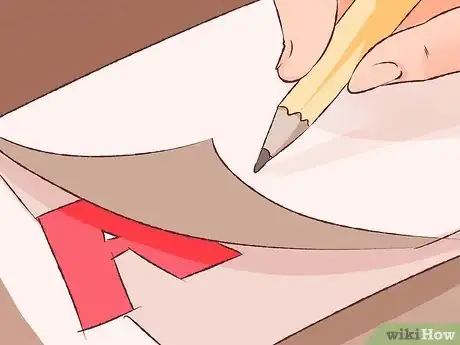
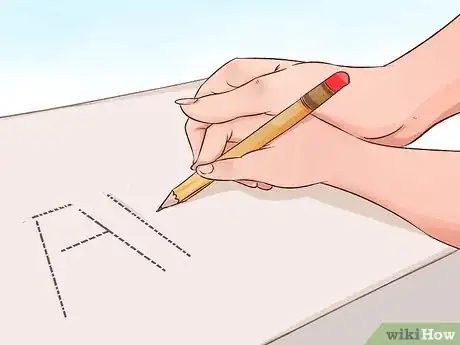
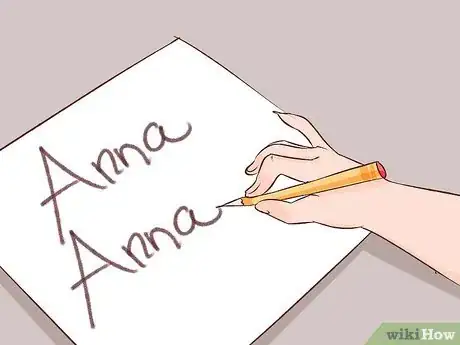
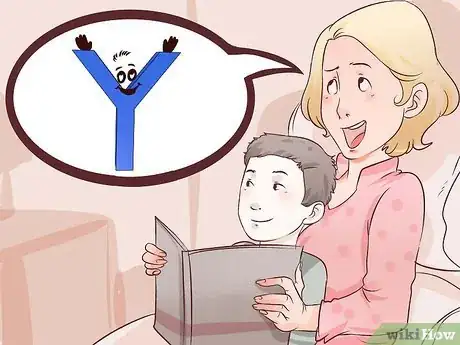
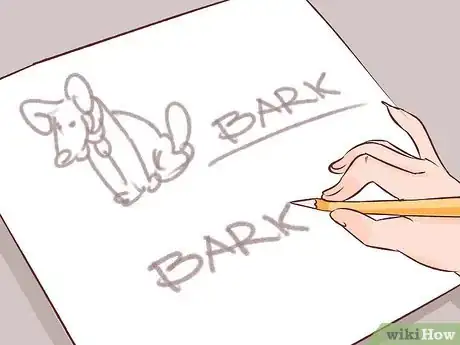
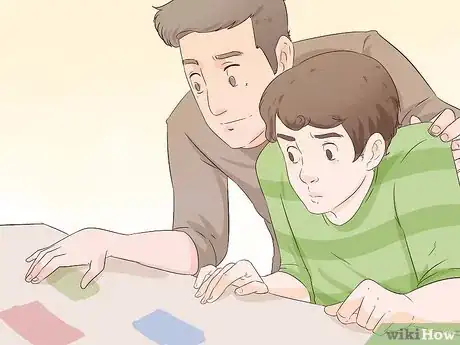
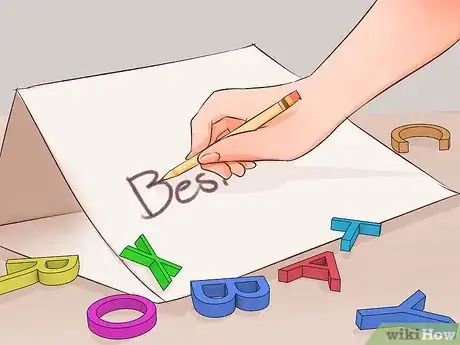
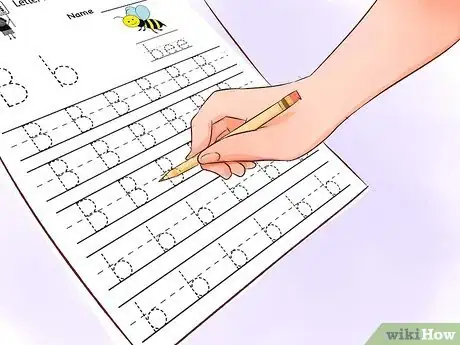
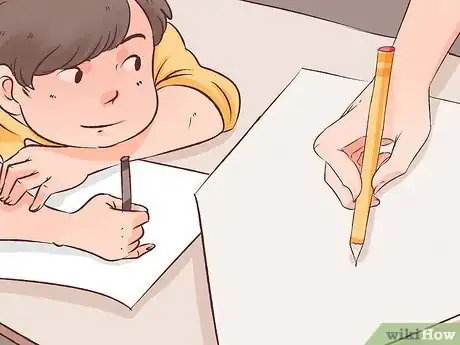
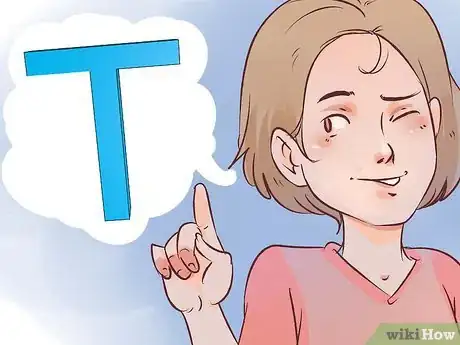
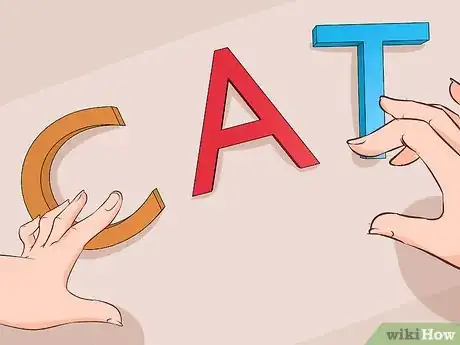
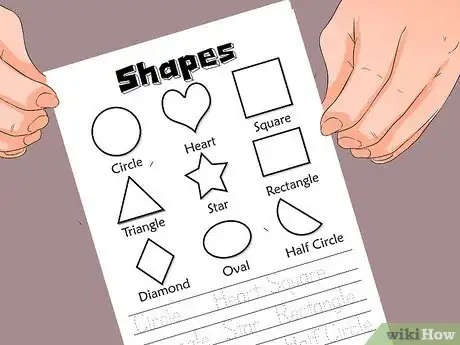
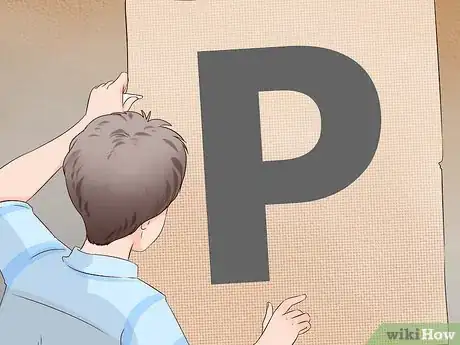
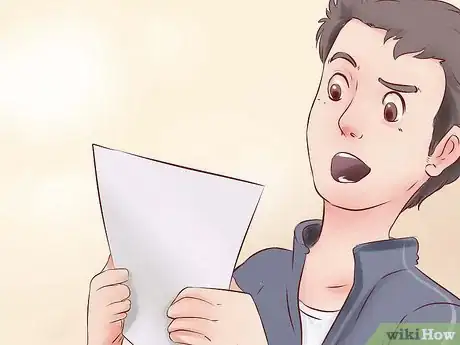
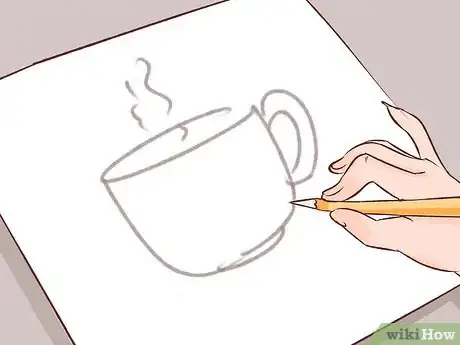
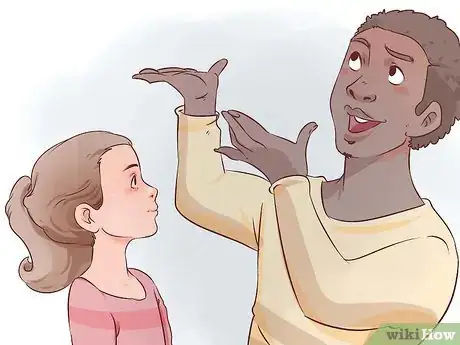
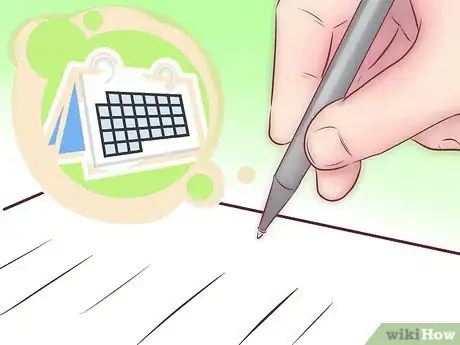
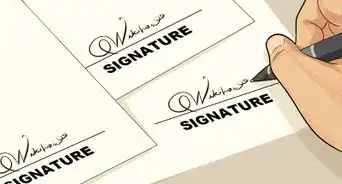

-Step-11-Version-3.webp)


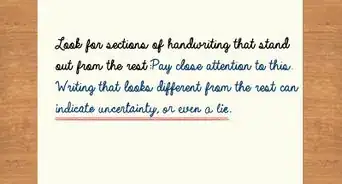
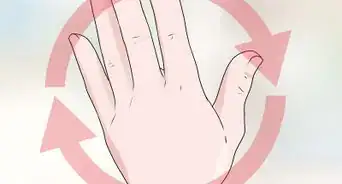

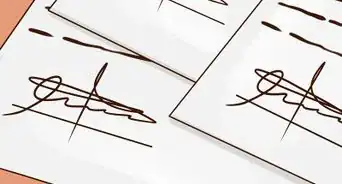
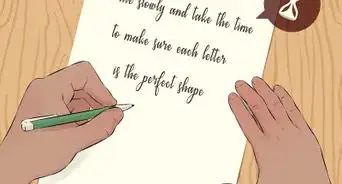
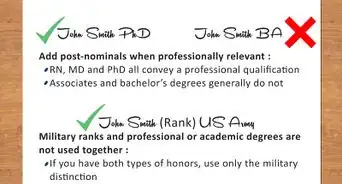

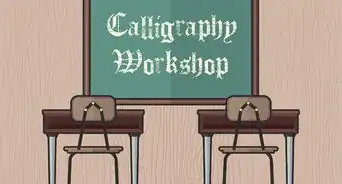








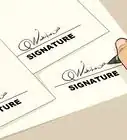

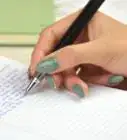
-Step-11-Version-3.webp)


































